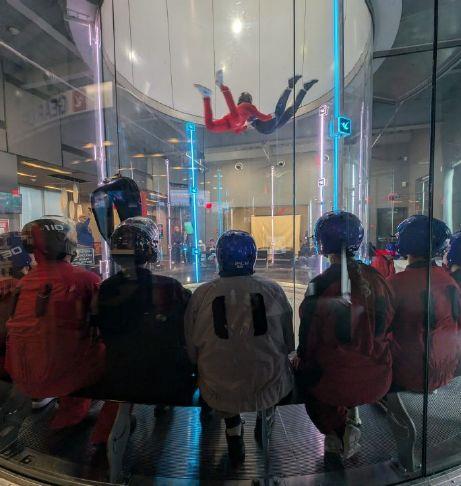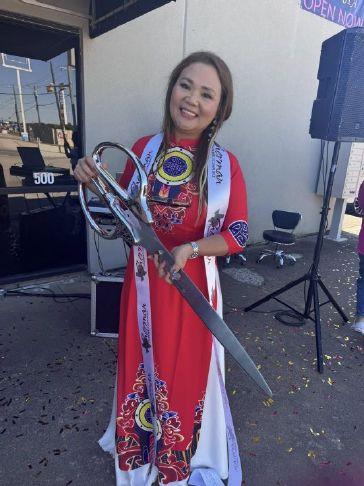A local group of volunteers have spent around 70 years helping to serve this community in a civilian capacity through homeland defense, search and rescue, emergency services and more.
“The Civil Air Patrol is a national organization with around 68,000 both adults and cadets across the country,” Texoma Composite Squadron Aerospace Education Officer Assistant Matt McManus said last week. “It is broken down into a military style leadership. It is an official auxiliary of the US Air Force. We have a regions, wings like the Texas wing, and then within the wings there are groups. Then within a group, there are squadrons. The Texoma Composite Squadron is a squadron in the Texas wing.”
The Texas arm of the organization has been in existence almost as long as the organization.
“We have a chaplain who is 93 who has been a part of the squadron just about since it began which was in the 1950s under Perrin Field,” McManus said.
The Civil Air Patrol has been around since 1941.
“During World War II, they were called the Civil Air Defense,” McManus explained. “They patrolled the coastal waters looking for German submarines and that kind of thing. There was quite an effort for that. They were credited with a lot of saves and that sort of thing.”
The Texoma Squadron has about 30 people with around 18 cadets and 10-12 adult members. The numbers can fluctuate.
“You can call to get the specific directions, but a cadet can come to a meeting,” McManus said. “Their parents are welcome to come and sit through a meeting with us. The cadet would attend free weekly meetings. After that, they can get an application and then they can join the Civil Air Patrol.
“They start through a process where they learn all the things cadets need to learn. Cadet programs are one of our major focuses.”
There are three major focuses: cadet programs, aerospace education and emergency services.
“As part of that process, they are going to learn through monthly character development and leadership classes,” McManus said. “They are taught professionalism and drilling ceremonies like the ones used in the military. They have the opportunity to go to field training exercises where they can learn emergency services types of things. They have the chance to do orientation flights where we take them up in a single engine airplane to fly and experience aviation firsthand.”
Each week, programs are taught in each field giving cadets the opportunity to learn about a variety of topics each month.
“One week may be devoted to character development,” McManus said. “We always have a safety meeting where they will teach some sort of safety needs. The last meeting was about bad weather: thunder storms, tornados and how you can prepare and what not to do. There is a leadership class each month. There is usually time spent on physical training, physical therapy and physical challenges and that sort of thing.”
And, cadets are not the only ones who receive this type of training. Adults can partake in the training along with adult-centered lessons.
“There will always be supervision,” McManus said. “The adults do have their own types of training. We have various levels of pilots. There is an orientation pilot who just flies orientation flights. There is a mission pilot who does search and rescue missions. They are taught how to do grid searches and direction finding. They can use direction finding equipment to look for downed airplanes or lost hikers as an example. Then there are several radio communication classes that adults can get into as well as cadets 16 and older. We have a pretty vast radio communication network that backs up local and national agencies in the event of disasters and that sort of thing.”
The Civil Air Patrol Texoma Composite Squadron cadets and adults meet in the little building at Texoma Regional Airport. The meetings are every Monday from 6-8:30 p.m.
“We can explain any questions they may have,” McManus said. “Just show up and we can go from there.”
Even though the group is made up of civilians, they do have uniform requirements.
“There are also opportunities for the cadets to go to encampments,” McManus said. “These are kind of like a summer camp where they would spend time with other kids with the supervision of adults. They learn more concentrated skills. They are usually during the summer. There are winter encampments as well. They will learn many of the same things, but in a more concentrated format.”
Encampments could be 3 days or more days.
“The one this year in the summer is in Bastrop, Texas,” McManus said. “Then the Oklahoma wing is having one fairly close. Cadets in North Texas have the opportunity to go to the Oklahoma encampment also.
“If there are financial problems for cadets not being able to go to the encampment, there are always scholarships and grants that we can get to help for families so there is never a reason not to come.”
He also said people would be interested to know how the skills learned are used to help the public.
“The federal government has assigned radio frequencies just for the Civil Air Patrol and it ensures interoperability with the other federal and military agencies,” he said. “We also have pretty extensive fleet of unmanned aircraft systems, UAVs, that we maintain at the national level. They can be loaned out and used in the region and in the wings. There are some pretty sophisticated high-quality drones that can do really cool stuff. Some of them are even classified, but they can be used in the case of natural disasters and that kind of thing.”
The work of the Civil Air Patrol is all summed up in their motto.
” We are volunteers serving America in local communities,” McManus said. “That is really what we do.”




